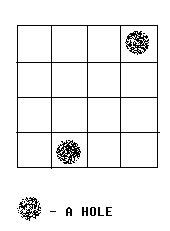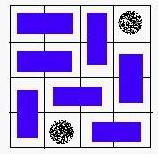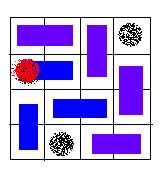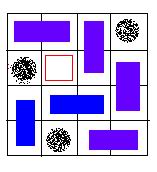 |
| ||||
Home Page
F.A.Qs
Statistical Charts
Past Contests
Scheduled Contests
Award Contest
| ||||||||||
| Online Judge | Problem Set | Authors | Online Contests | User | ||||||
|---|---|---|---|---|---|---|---|---|---|---|
| Web Board Home Page F.A.Qs Statistical Charts | Current Contest Past Contests Scheduled Contests Award Contest | |||||||||
|
Language: Chessboard
Description Alice and Bob often play games on chessboard. One day, Alice draws a board with size M * N. She wants Bob to use a lot of cards with size 1 * 2 to cover the board. However, she thinks it too easy to bob, so she makes some holes on the board (as shown in the figure below).
 We call a grid, which doesn’t contain a hole, a normal grid. Bob has to follow the rules below: 1. Any normal grid should be covered with exactly one card. 2. One card should cover exactly 2 normal adjacent grids. Some examples are given in the figures below: 
A VALID solution. 
An invalid solution, because the hole of red color is covered with a card. 
An invalid solution, because there exists a grid, which is not covered. Your task is to help Bob to decide whether or not the chessboard can be covered according to the rules above. Input There are 3 integers in the first line: m, n, k (0 < m, n <= 32, 0 <= K < m * n), the number of rows, column and holes. In the next k lines, there is a pair of integers (x, y) in each line, which represents a hole in the y-th row, the x-th column. Output If the board can be covered, output "YES". Otherwise, output "NO". Sample Input 4 3 2 2 1 3 3 Sample Output YES Hint 
A possible solution for the sample input. Source POJ Monthly,charlescpp |
[Submit] [Go Back] [Status] [Discuss]
All Rights Reserved 2003-2013 Ying Fuchen,Xu Pengcheng,Xie Di
Any problem, Please Contact Administrator